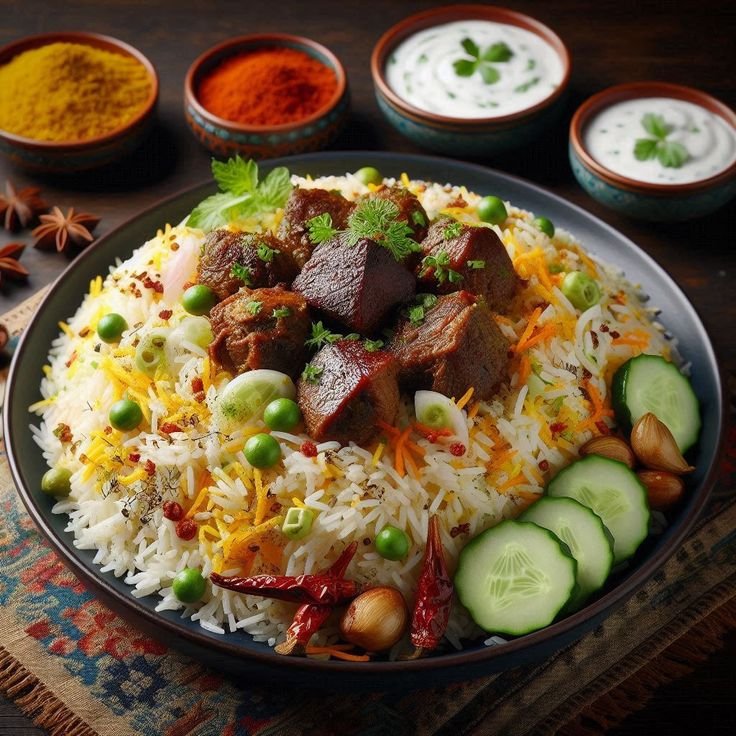
The Timeless Delight: Biryani
Biryani is more than just a dish; it’s an emotion that transcends borders and cultures. This aromatic and flavorful rice dish is a staple in many countries, each adding its unique twist to the preparation. Let’s dive into the world of biryani, exploring its origins, varieties, and why it continues to be a beloved culinary treasure.
The Origins of Biryani
Biryani is believed to have originated in Persia and made its way to the Indian subcontinent through travelers and merchants. The word “biryani” is derived from the Persian words “birian” (fried before cooking) and “beryan” (to roast). Over time, this dish evolved as it adapted to local spices, ingredients, and cooking styles.
The Art of Biryani Preparation
Biryani is a meticulous dish that requires patience and skill. The essence of a perfect biryani lies in its layers. Typically, the dish is prepared by layering marinated meat or vegetables with partially cooked basmati rice, followed by the infusion of spices such as cardamom, cinnamon, and cloves. The dish is then slow-cooked, allowing the flavors to meld beautifully.
Popular Varieties of Biryani
- Hyderabadi Biryani: Known for its rich and spicy flavors, this biryani is a hallmark of the Nizam’s cuisine. It’s usually cooked with marinated meat and saffron-infused rice.
- Lucknowi (Awadhi) Biryani: A milder version, this biryani boasts fragrant rice and tender meat cooked in a pot sealed with dough, a technique called “dum” cooking.
- Kolkata Biryani: Influenced by Awadhi cuisine, this variant is lighter on spices and includes potatoes, making it uniquely flavorful.
- Malabar Biryani: Hailing from Kerala, this biryani features short-grain rice, ghee, and a blend of mild spices, often paired with seafood or chicken.
- Vegetarian Biryani: A delightful option for vegetarians, this version is packed with vegetables, paneer, or soya chunks and aromatic spices.
Why Biryani is Loved Worldwide
- Versatility: Biryani caters to diverse palates, from the fiery spices of Hyderabadi biryani to the subtle flavors of Lucknowi biryani.
- Aromatic Appeal: The blend of spices and herbs creates an irresistible aroma that draws people in.
- Cultural Connection: Biryani often plays a central role in celebrations, weddings, and festivals, symbolizing joy and togetherness.
- Nutritional Value: With its mix of proteins, carbohydrates, and spices, biryani can be a wholesome meal when prepared thoughtfully.
Tips for Making the Perfect Biryani at Home
- Choose Quality Ingredients: Use premium-quality basmati rice and fresh spices for the best results.
- Marinate the Meat: For a juicy and flavorful outcome, marinate the meat for at least a few hours.
- Layer Wisely: Ensure even layering of rice and meat/vegetables for consistent flavor.
- Cook on Low Heat: Slow-cooking enhances the taste and texture.
- Use Saffron or Rose Water: These add a touch of luxury and authenticity to your biryani.
Conclusion
Biryani is more than just a meal; it’s a culinary masterpiece that brings people together. Whether you prefer it spicy, mild, or vegetarian, there’s a biryani for everyone. So why not embark on a flavorful journey and savor the timeless delight of biryani today?